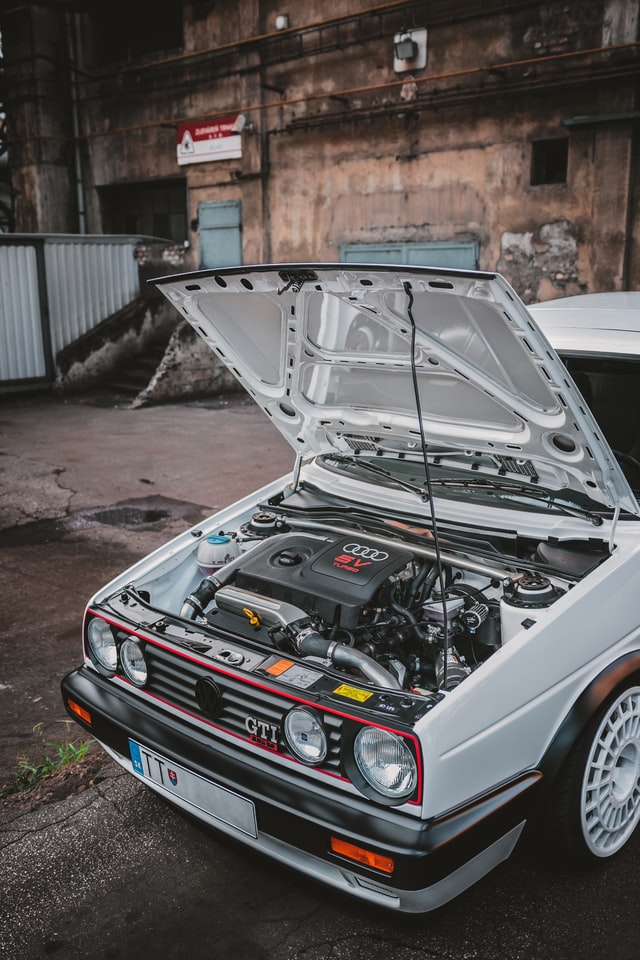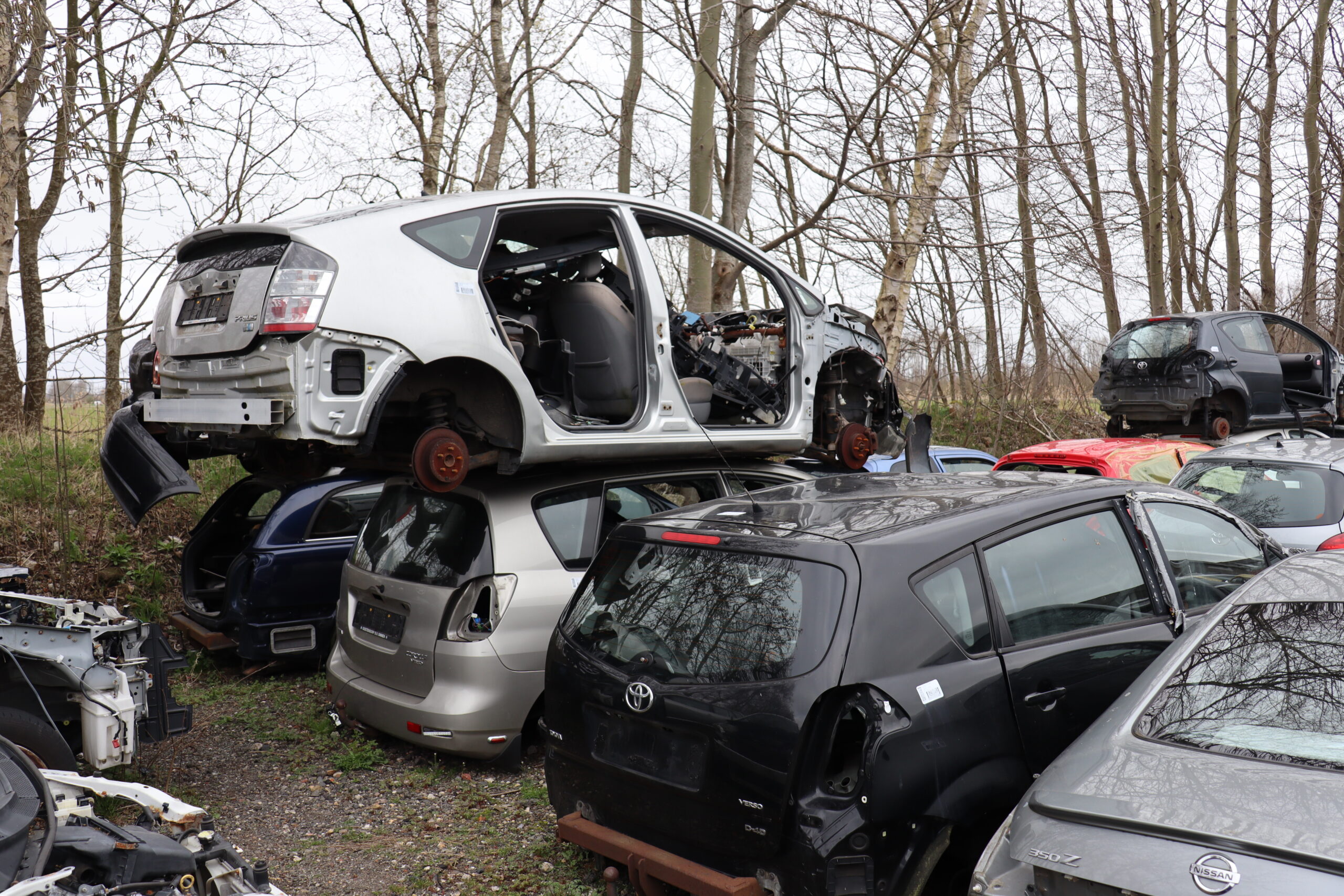Polypropylene (PP) is a type of plastic that is commonly used in the automotive industry. When it comes to efficiency in recycling, there is still a lot of room for improvement. New recycling methods should increase the percentage of this plastic that is given a second life.
Tekst Jens Holierhoek
Unsplash
European car manufacturers use over a million tonnes of plastic each year, and the amount of plastic in cars continues to grow. According to a report published by the French Veolia Institute in 2019, an end-of-life vehicle (ELV) in 2030 will contain an average of 25 kilos more plastic than it does now. One of the 39 plastic types that is often used in car production is PP. It is especially popular as a thermoplastic, because it is a rather stiff material that is resistant to high temperatures. It can also handle chemical solutions and acids, and can be cast into almost any desired shape.
The growth in the use of PP is also the result of the increase in the production of electric vehicles.
Increasing demand
The plastic is used in bumpers, floor mats, seats and dashboards, among other things. According to the European Confederation of Recyclers, EuRIC, about a third of the plastics used in cars is PP. The British consultancy firm Nexant expects this will only increase, as new applications are constantly discovered. It is sometimes even used as an alternative to certain metal parts under the hood. The growth is also the result of the increase in the production of electric vehicles, which require lighter parts to balance the heavy battery packs.
Sink-float method
The fact that cars contain more and more plastic poses a challenge to scrap car recyclers. Plastic recycling is difficult, and the methods used are not adequately selective, according to the Veolia Institute. A large part of the plastics from cars can be separated after the shredding of the car in post-shredder stages. A commonly-used technology to separate plastics is the sink-float method. The relative density used for separation means multiple plastic types stay mixed up. Because PP has a positive value as a recycled material, recyclers can take this a step further. It should be said that the market for recycling is primarily dictated by the costs of the process, the quality (purity) and the available quantity.
The fact that cars contain more and more plastics is a challenge for the recycling companies of end-of-life cars
New methods
In order to make PP recycling more efficient, other technologies should be found. The airflow method appears a likely contender. In this method, an airflow is led through the closed vertical separation channel, which pushes up the light material. The heavy materials stay in place. One of the challenges of this technology is that it requires more energy than the current sink-float method. Electrostatic separation is another option. In this method, particles are not separated on the basis of density, but on the basis of charge. Some plastics have a positive charge, and others are negative. The issue is that different polymers – and other types of materials – have similar charges. Another option is the magnetic fluid method. This works on the principle of the separation of waste based on relative density using a sink-float method. Plastic is shredded to small particles and placed in a bath of ferromagnetic fluid. Using special magnets, that fluid can be made lighter or heavier, so the particles will start floating at various heights based on their density.
As good as new
In order to reuse PP more often, a larger area of application could be helpful. This is why the South-Korean Songwon – a leading specialist in PP stabilisation applications for the automotive industry – recently introduced a new stabiliser that can be added to lower-grade recycled PP. This might just become the new standard, which would mean that more PP can be recycled. By increasing the concentration levels of the stabiliser, the heat stability and lifespan increases. Because of this, the plastic can also be used for application under the hood. For example, the plastic cover of the engine can more frequently be made of PP that is as good as new.
Dashboards and floor mats made of PP are processed into clear plastic granules
Notice: Undefined index: alt in /nas/content/live/arngreenlight/wp-content/themes/sbtheme/library/framework/extensions/shortcodes/shortcodes/sb_fotos/views/view.php on line 4
Notice: Undefined index: alt in /nas/content/live/arngreenlight/wp-content/themes/sbtheme/library/framework/extensions/shortcodes/shortcodes/sb_fotos/views/view.php on line 7
South Korean Songwon recently launched a new stabilizer that can be added to recycled PP which is of lesser quality.
Advanced PP recycling in Ohio
PP is often used as a packaging material. For shampoo bottles, for example. Only three percent of this is recycled, as the plastic retains aromas and turns black or grey after recycling. For car parts, this is usually not so much of a problem, but for a new shampoo bottle it is. The American PureCycle Technologies has some ideas on how to deal with this. In the summer of 2019, the company opened a 300-million, state-of-the-art recycling plant. An annual 54-million kilos of PP are processed into odourless, clear plastic granules in Ohio. Thanks to purification, it can handle almost all plastic products at a molecular level, from carpets to toys and from packaging to disposable diapers. Not even dashboards and floor mats are safe.
Cathelijne van Wingerden
Hier komt informatie over de auteur.
Geavanceerde PP-recycling in Ohio
PP wordt ook veel gebruikt als verpakkingsmateriaal. Bijvoorbeeld voor shampooflessen. Slechts drie procent wordt gerecycled, omdat het plastic geuren vasthoudt en na recycling zwart of grijs wordt. Voor auto-onderdelen meestal geen probleem, maar voor een nieuwe fles shampoo wel. Het Amerikaanse PureCycle Technologies weet hier raad mee. In de zomer van 2019 opende het een 300 miljoen dollar kostende state-of-the-art recyclingfabriek. In Ohio wordt op jaarbasis 54 miljoen kilo aan PP verwerkt tot geurloze, heldere plastickorrels. Dankzij purificatie kan het op moleculair niveau bijna alle plastic producten aan, van tapijten tot speelgoed en van verpakkingsmateriaal tot wegwerpluiers. Zelfs dashboards en vloermatten zijn niet veilig.
PP wordt ook veel gebruikt als verpakkingsmateriaal. Bijvoorbeeld voor shampooflessen. Slechts drie procent wordt gerecycled, omdat het plastic geuren vasthoudt en na recycling zwart of grijs wordt. Voor auto-onderdelen meestal geen probleem, maar voor een nieuwe fles shampoo wel. Het Amerikaanse PureCycle Technologies weet hier raad mee. In de zomer van 2019 opende het een 300 miljoen dollar kostende state-of-the-art recyclingfabriek. In Ohio wordt op jaarbasis 54 miljoen kilo aan PP verwerkt tot geurloze, heldere plastickorrels. Dankzij purificatie kan het op moleculair niveau bijna alle plastic producten aan, van tapijten tot speelgoed en van verpakkingsmateriaal tot wegwerpluiers. Zelfs dashboards en vloermatten zijn niet veilig.
Stiba enthousiast over hergebruik
Een coördinerende rol voor Stiba om hergebruik van auto-onderdelen in Nederland nog meer van de grond te krijgen? “Wij zijn er klaar voor”, vertelt Stiba-secretaris Stefan Cabri. “Hergebruik van onderdelen past volledig bij onze ideeën over de circulaire economie en in het streven om CO2 terug te dringen.” Cabri geeft aan dat de branchevereniging de noodzaak al vaak bij de politiek heeft aangekaart. “De overheid kan wat ons betreft hergebruik actiever stimuleren, bijvoorbeeld met een lager btw-tarief. Een uitstekend idee van Niels Klarenbeek! Zo stuur je niet alleen inhoudelijk, maar ook op de portemonnee van de automobilist.”






